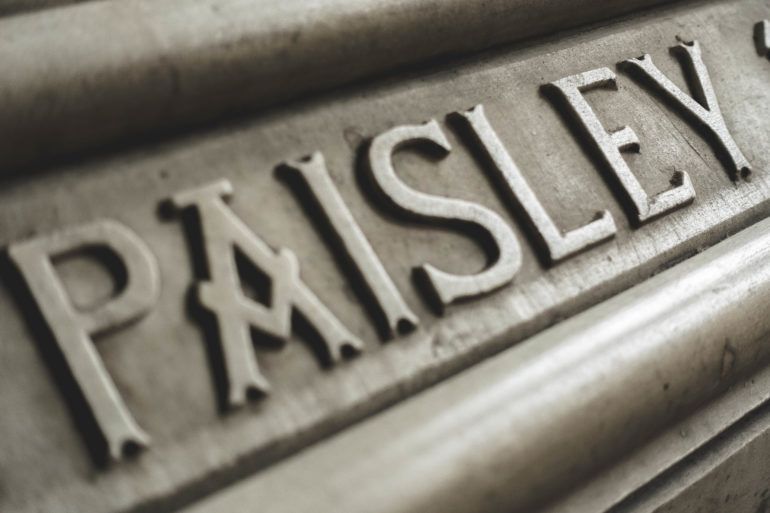Local writer Claire Casey writes about the tragic tale of Marjorie Bruce – daughter of the famous King Robert the Bruce, hero of Scotland’s Wars of Independence.
Another legend that has become associated with Paisley Abbey is the death of Princess Marjorie Bruce, who was the daughter of Robert the Bruce.
In around the time of 1315, after her long imprisonment by the English, she had married Walter the Steward, the High Steward of Scotland and a descendent of Fitz Alan, the monastery’s founder. As the legend goes, while she was heavily pregnant Marjorie had been out riding along what is now Renfrew Road.
For some reason, her horse had spooked and had thrown her to the ground. This fall is said to have caused Marjorie a fatal injury. The story continues that she was rushed to the infirmary at the monastery, where the monks saved the baby. It has been claimed that they achieved that through the first ever caesarean section to be carried out in Scotland. Even though they were supposedly able to save the baby, the monks were unable to save Marjorie and she died not long after the birth of her son, Robert Stewart.
In the legend, it has been claimed that during the caesarean, the skin to the side of the baby’s eye was nicked by the knife that had been used to carry out the crude operation. It was this cut that some believe lead to Robert’s eye being permanently disfiguring.
After David II had died without issue, Robert Stewart, the son of Marjory Bruce, went on to become the first Scottish king of the Stewart dynasty. The story of his birth has been commemorated with a cairn, which stands on the Renfrew Road, close to the Abbotsinch Retail Park.
The cairn had replaced a pillar that may have commemorated a victory against the army of Somerland in 1164. The pillar mistakenly became known as Queen Bleary’s cross, which leads to the belief that was where Marjorie had fallen, rather than it being the marker of a battlefield. It has also been suggested by Sylvia Clark that the cairn that stands on Renfrew Road, and which is meant to mark the spot where Marjory fell, owes more to local myth making than to actual history. Therefore, it has nothing to do with Marjory’s death.
Despite this memorial to Marjory, the story of her death and the birth of Robert II within the monastery’s infirmary have been called into question in recent years. It has been suggested that it seems more likely that Marjorie died while giving birth in the Stewart Castle in Renfrew, rather than in Paisley’s monastic infirmary.
Within the Abbey, there is a feature that is commonly known as Princess Marjory’s Tomb. It can be found in the Abbey’s choir. It has been constructed out of ornate, carved stone and is topped with a stone effigy of a young woman. In recent years, it has been proven to be nothing more than a memorial at best. It seems that one of the Abbey’s former ministers had managed to construct this so-called tomb with some of the remaining fragments of the Abbey’s rude screen, which he used to form the tomb’s base.
It is believed that the effigy that sites on top of the tomb was taken from a burial within the graveyard that surrounded the Abbey. Therefore, the figure that forms the effigy has nothing to do with Marjorie but is instead the memorial of a nameless woman who had been interned somewhere in the Abbey’s grounds. At one point, the tomb itself was opened and found to contain no human remains, proving beyond all doubt that it is not a tomb.
Even though doubt has been cast on Marjory dying in childbirth within the walls of Paisley’s abbey, there is a grain of true in the story. It is known that Robert II did seem to have something wrong with one of his eyes, but the actual causes for what was wrong with his eye have remained unclear. It is possible that the eye deformity that he suffered from may have been sustained through a war injury, or through some sort of eye infection.
Even though Marjorie may not have died within the walls of the monastery’s infirmary, it is known that some of the High Stewards were buried within the grounds of the monastery. It has been suggested that they were buried within the vault of the Infirmary Chapel, a theory that is based on the intriguing comments made by a Bishop Pococke when he visited the Abbey in 1760.

